Search Result
Results for "
backbone
" in MedChemExpress (MCE) Product Catalog:
5
Biochemical Assay Reagents
5
Isotope-Labeled Compounds
| Cat. No. |
Product Name |
Target |
Research Areas |
Chemical Structure |
-
- HY-50936
-
|
Ecteinascidin 743; ET-743
|
Reactive Oxygen Species
Apoptosis
|
Inflammation/Immunology
Cancer
|
|
Trabectedin (Ecteinascidin 743; ET-743) is a tetrahydroisoquinoline alkaloid with potent antitumor activity. Trabectedin binds to the minor groove of DNA, blocks transcription of stress-induced proteins, induces DNA backbone cleavage and cancer cells apoptosis, and increases the generation of ROS in MCF-7 and MDA-MB-453 cells. Trabectedin has the potential for soft tissue sarcoma and ovarian cancer research .
|
-
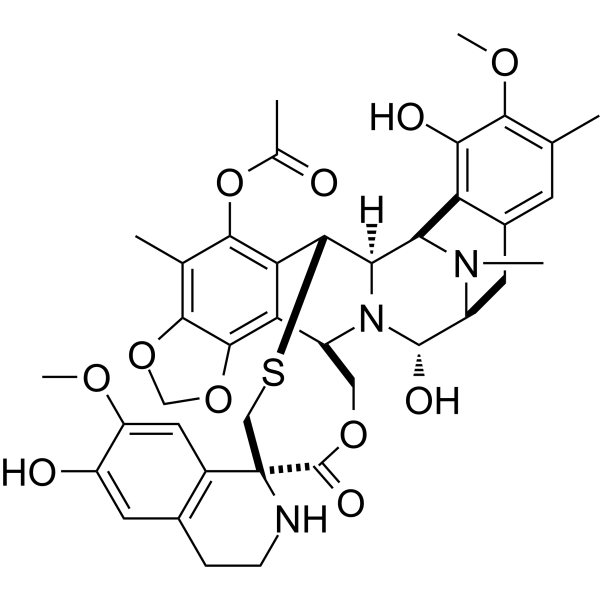
-
- HY-W004283
-
-
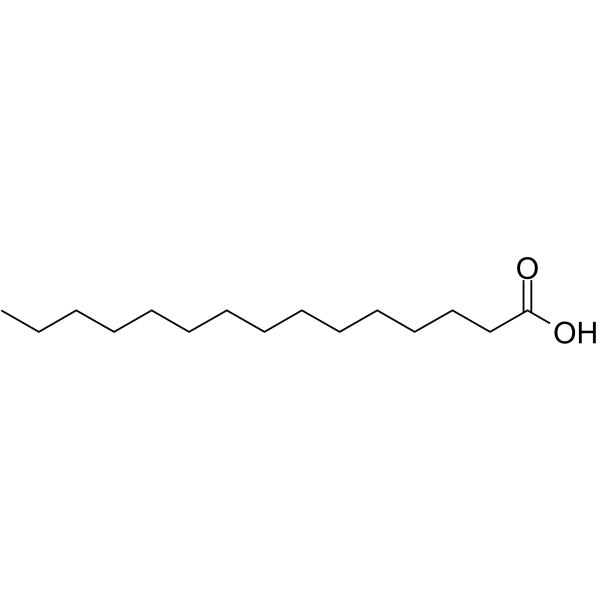
-
- HY-P99108
-
-

-
- HY-154921A
-
-
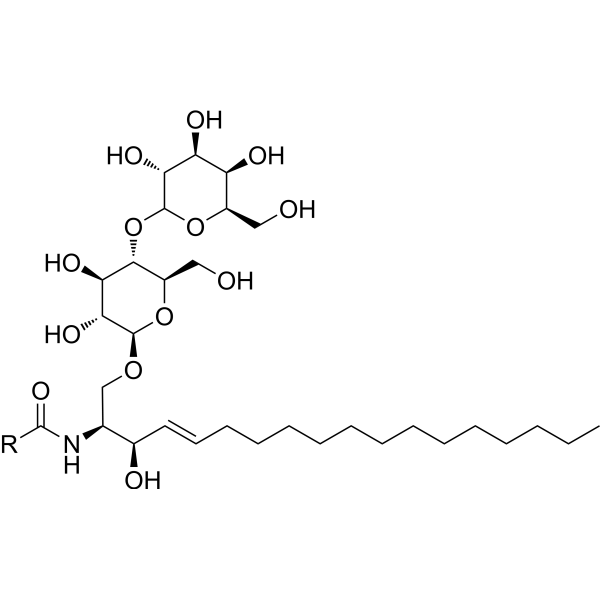
-
- HY-W004283S1
-
|
|
Endogenous Metabolite
|
Others
|
|
Pentadecanoic acid-d3 is the deuterium labeled Pentadecanoic acid. Pentadecylic acid is a saturated fatty acid with a 15-carbon backbone.
|
-
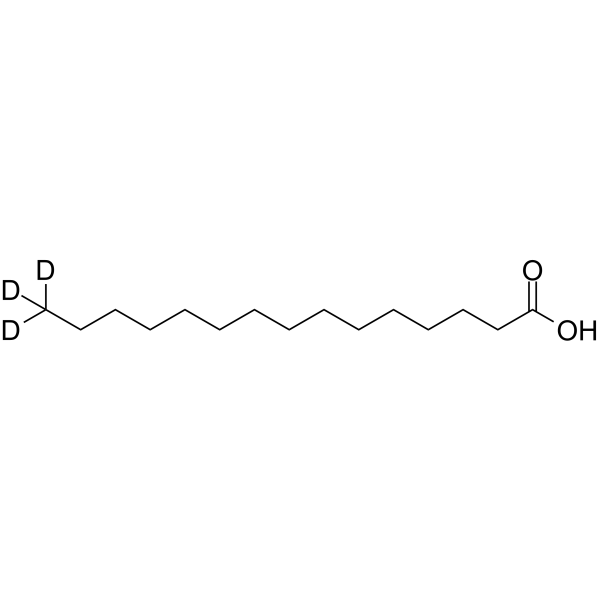
-
- HY-W004283S
-
|
|
Endogenous Metabolite
|
Others
|
|
Pentadecanoic acid-d29 is the deuterium labeled Pentadecanoic acid. Pentadecylic acid is a saturated fatty acid with a 15-carbon backbone.
|
-
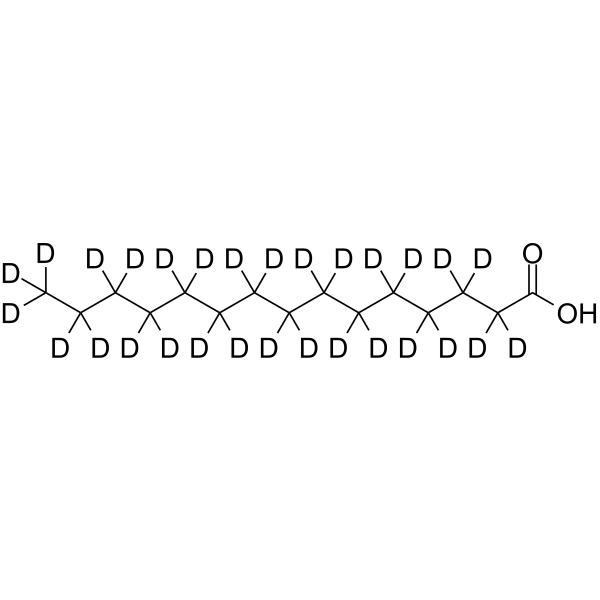
-
- HY-W004283S2
-
|
|
Endogenous Metabolite
|
|
|
Pentadecanoic acid-d2 is the deuterium labeled Pentadecanoic acid. Pentadecylic acid is a saturated fatty acid with a 15-carbon backbone.
|
-
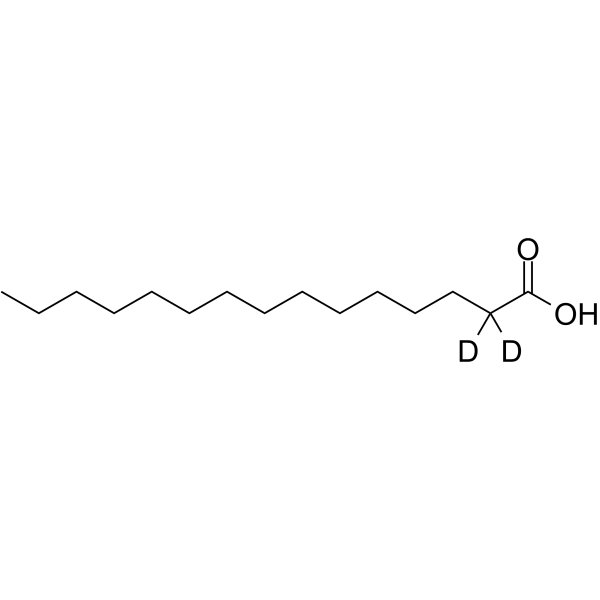
-
- HY-P3159
-
|
|
Biochemical Assay Reagents
|
Others
|
|
VPM peptide is a dithiol protease-cleavable peptide cross-linker. VPM peptide can be incorporated into the backbone of the PEG-diacrylate (PEG-DA) macromer to form PEG hydrogel .
|
-

-
- HY-A0103
-
|
|
|
|
|
Xanthan gum is a microbial polysaccharide produced by Xanthomonas campestris. The structure of xanthan gum is based on a cellulose backbone of β-(1-4)-linked glucose units with a trisaccharide side of mannose-glucuronic acid-mannose attached to every other glucose unit in the backbone chain. Some terminal mannose units are pyruvated and some internal mannose units are acetylated. Due to its unique rheology and gelling properties, it is widely used as a food additive, thickener and stabilizer in the food and petroleum industries.
|
-

-
- HY-P3159A
-
|
|
Biochemical Assay Reagents
|
Others
|
|
VPM peptide TFA is a dithiol protease-cleavable peptide cross-linker. VPM peptide TFA can be incorporated into the backbone of the PEG-diacrylate (PEG-DA) macromer to form PEG hydrogel .
|
-
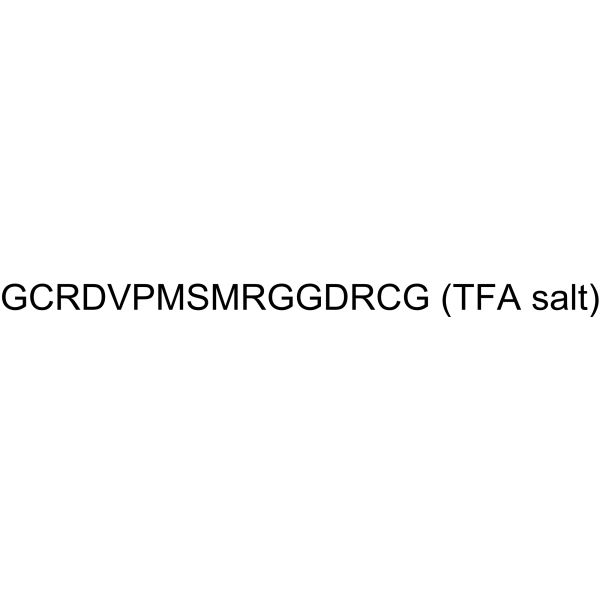
-
- HY-W004260B
-
|
Glycerol diarachidate
|
Endogenous Metabolite
Biochemical Assay Reagents
|
Others
|
|
Dieicosanoin is a diacylglycerol containing arachidic acid (HY-W004260). Arachidic acid is a saturated long-chain fatty acid with a 20-carbon backbone. Arachidic acid can be isolated from peanut butter and anaerobic fungi .
|
-

-
- HY-N6730
-
|
Aminopentol
|
Apoptosis
|
Neurological Disease
|
|
Hydrolyzed Fumonisin B1 (Aminopentol) is the backbone and main hydrolysis product of the mycotoxin Fumonisin B1 (HY-N6719). Hydrolyzed Fumonisin B1 can weakly inhibit ceramide synthase .
|
-
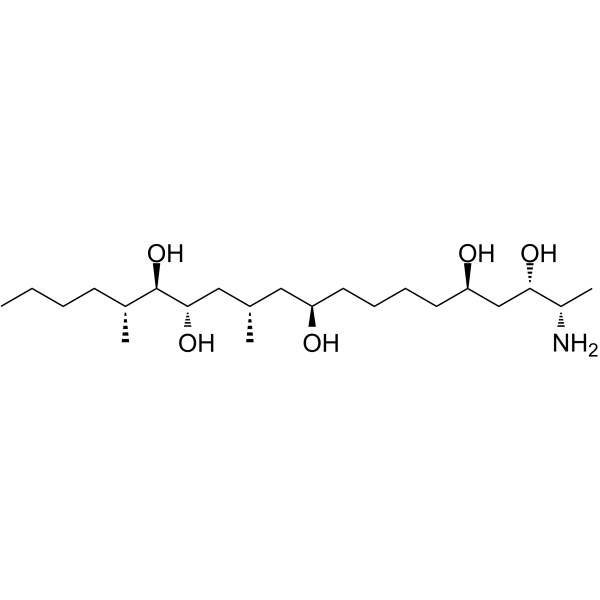
-
- HY-156138A
-
|
|
Biochemical Assay Reagents
|
Others
|
|
CB-TE2A (tetrahydrochloride)is a bifunctional chelator (Bifunctional Chelator; BFC), which is a TETA derivative of the macrocyclic ligand tetradecane backbone. CB-TE2A (tetrahydrochloride) can be used for conjugation of peptides and radionuclides.
|
-
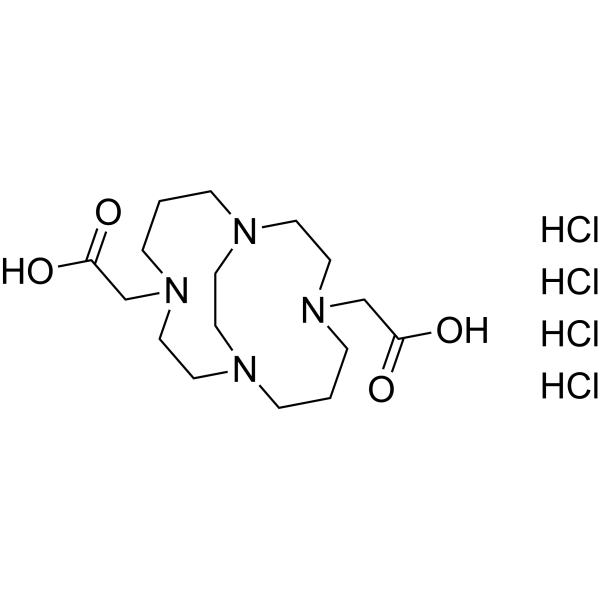
-
- HY-W717742
-
|
|
Biochemical Assay Reagents
|
Others
|
|
p-NO2-Bn-Cyclenis a bifunctional chelator (Bifunctional Chelator; BFC), which is a derivative of the macrocyclic ligand dodecane backbone Cyclen. p-NO2-Bn-Cyclen can be used for conjugation of peptides and radionuclides.
|
-
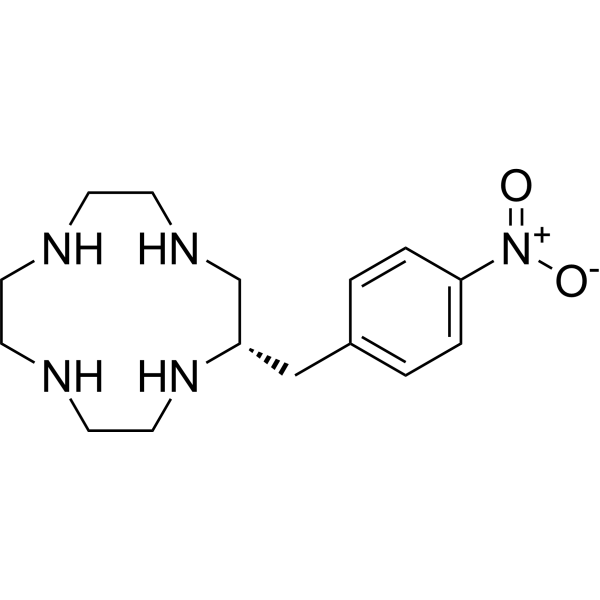
-
- HY-135859
-
|
|
ADC Linker
|
Cancer
|
|
NH2-MPAA-NODA is a nitroveratryl-based photocleavable linker, it has a NODA motif and a methyl phenyl acetic acid (MPAA) backbone . NH2-MPAA-NODA can be used as a radiolabel by labeling with 18F-fluoride.
|
-
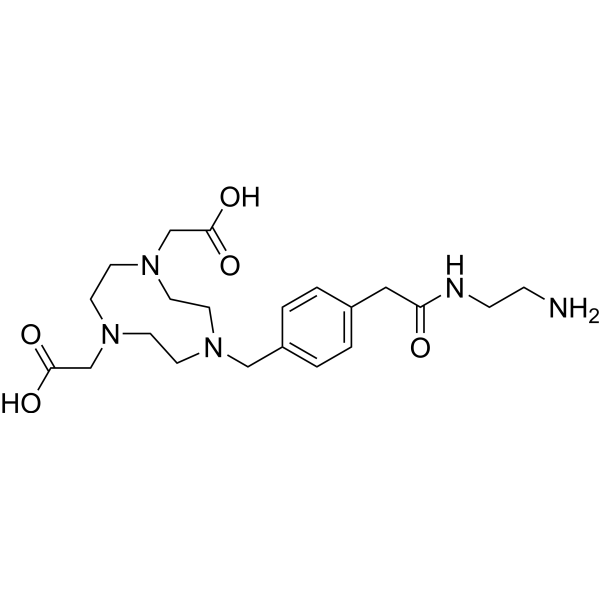
-
- HY-W008351S
-
|
|
Antibiotic
Isotope-Labeled Compounds
|
Cancer
|
|
L-Ribose- 13C is the 13C labeled L-Ribose. L-Ribose, a non-naturally occurring pentose, is an ideal starting material for use in synthesizing L-nucleosides analogues. Many anticancer and antiviral agents are synthesized based on a backbone of L-Ribose and i
|
-
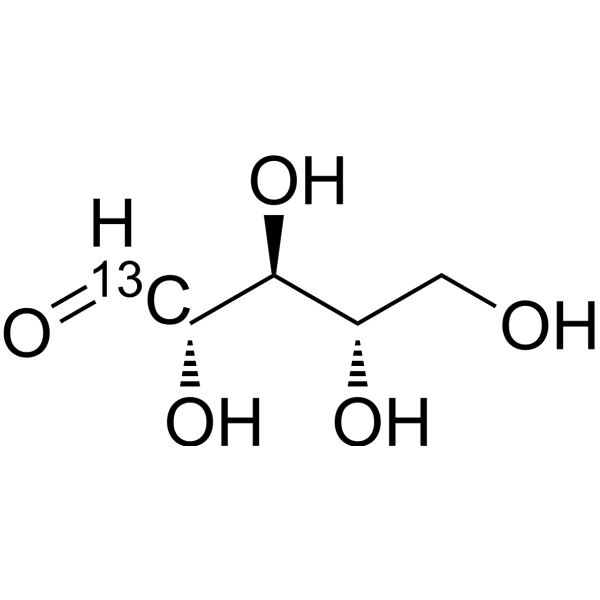
-
- HY-W013136
-
|
UX007
|
Others
|
Neurological Disease
|
|
Triheptanoin (Propane-1,2,3-triyl triheptanoate) is a synthetic medium-chain triglyceride (MCT) consisting of three odd-chain 7-carbon (heptanoate) fatty acids on a glycerol backbone. Triheptanoin can be used for the research of inherited metabolic disorders .
|
-
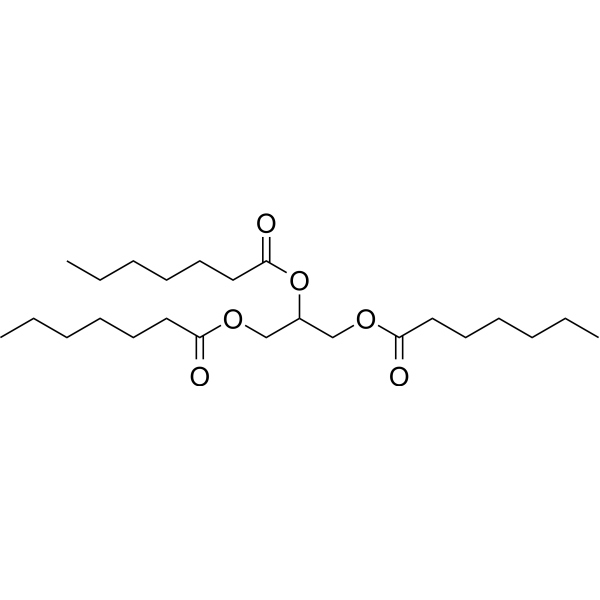
-
- HY-E70110
-
|
|
Others
|
Others
|
|
Endo-1,4-β-mannanase is an important catalytic agent that randomly cleave the β-1,4-linkage in the mannan backbone and release short β-1,4-mannooligosaccharides and mannose .
|
-

-
- HY-113017
-
|
|
Endogenous Metabolite
|
Others
|
|
Neuraminic acid is an acidic amino sugar with a backbone formed by nine carbon atoms. Neuraminic acid may also be visualized as the product of an aldol-condensation of pyruvic acid and D-mannosamine (2-amino-2-deoxy-mannose). Neuraminic acid is a functional group of some biologically active mucoproteins .
|
-
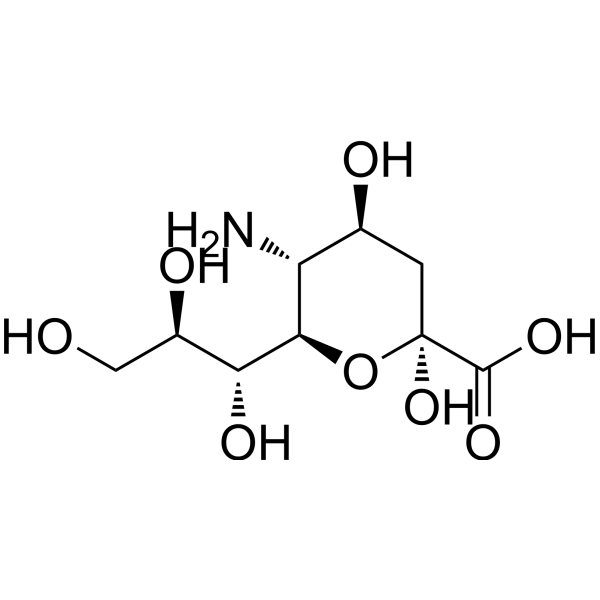
-
- HY-W013466
-
|
Sebacic acid dimethyl ester
|
Biochemical Assay Reagents
|
Others
|
|
Dimethyl decanedioate belongs to the class of diesters and consists of a sebacic acid backbone (also known as sebacic acid) esterified with two methyl groups. This compound has a fruity smell and is commonly used as a flavor and fragrance ingredient in a variety of products, including perfumes, soaps and cosmetics. It can also be used as a plasticizer in the production of polymers and as a neutralizer in the synthesis of certain drugs.
|
-
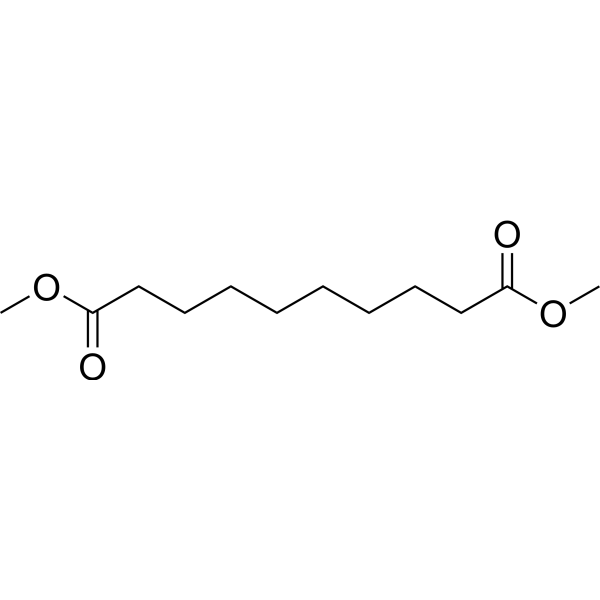
-
- HY-E70217
-
|
Heat-sensitive UDG
|
Others
|
Cancer
|
|
Uracil DNA Glycosylase (UDG/UNG), heat-sensitive (Heat-sensitive UDG) can catalyze the hydrolysis of the N-glycosidic bond between the uracil base and the sugar phosphate backbone in the DNA chain containing uracil, releasing free uracil. Uracil DNA Glycosylase (UDG/UNG), heat-sensitive eliminates the carryover contamination dUTP-incorporated amplification products .
|
-
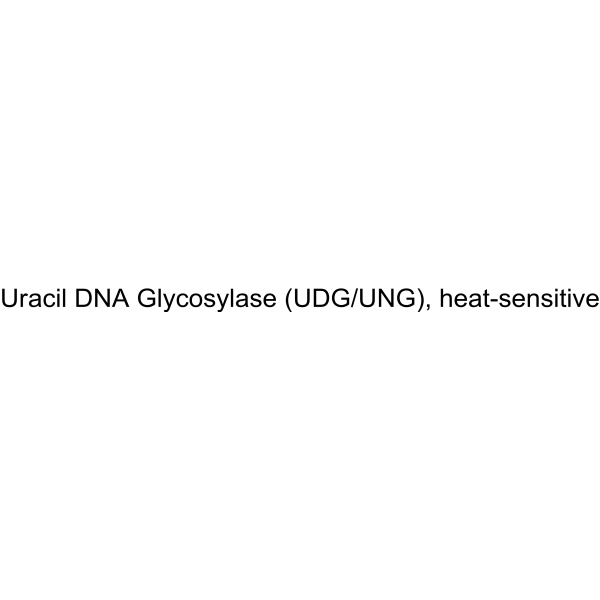
-
- HY-150502
-
|
pSAT
|
Biochemical Assay Reagents
|
Others
|
|
Poly(styrenyl acetal trehalose) (pSAT) is composed of trehalose side chains linked to a polystyrene backbone via acetals. Poly(styrenyl acetal trehalose) stabilizes a variety of proteins and enzymes against fluctuations in temperature, and does not trigger the innate immune response. Poly(styrenyl acetal trehalose) can be used in synthesis of protein-polymer conjugates for reduced renal clearance of the biomolecule .
|
-
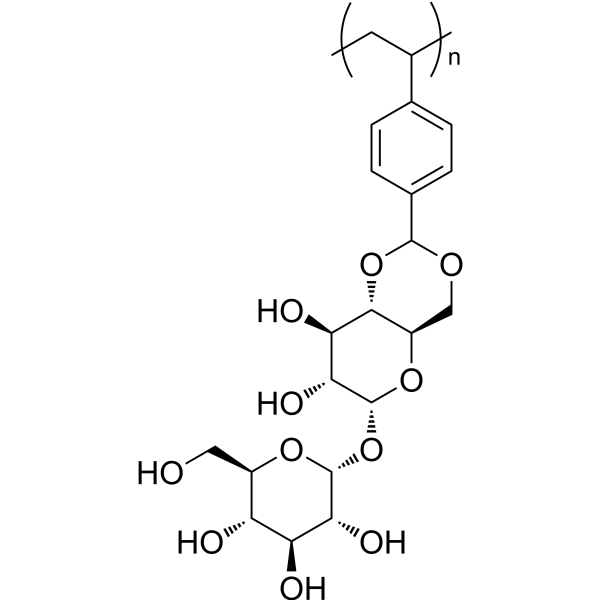
-
- HY-100939
-
|
|
Sodium Channel
|
Neurological Disease
|
|
4-Chlorophenylguanidine hydrochloride is a potent ASIC3 positive allosteric modulator and reverses the effects of ASIC3 desensitization. 4-Chlorophenylguanidine hydrochloride influences ASIC3 activity through directly activating the channel and increasing proton sensitivity. 4-Chlorophenylguanidine hydrochloride offers a chemical backbone for the design of new ASIC3 ligands to study ASIC3 in vivo .
|
-
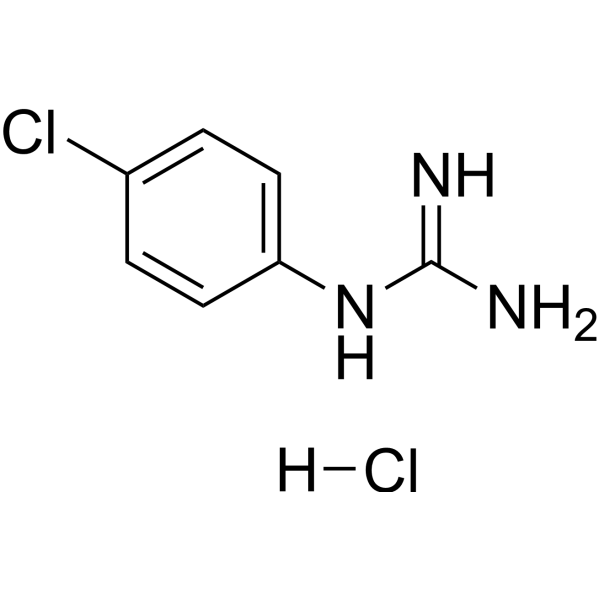
-
- HY-138577
-
|
|
DNA/RNA Synthesis
Nucleoside Antimetabolite/Analog
|
Others
|
|
2'-F-Bz-dC Phosphoramidite can be used in the synthesis of oligoribonucleotide (such as DNA and RNA). 2'-F-Bz-dC Phosphoramidite also used for synthesis antiviral agent to inhibit the replication of virus. 2'-F-Bz-dC Phosphoramidite contains a phosphorothioate backbone, to synthesise antisense oligonucleotide analogs to induce apoptosis in cancer cells .
|
-
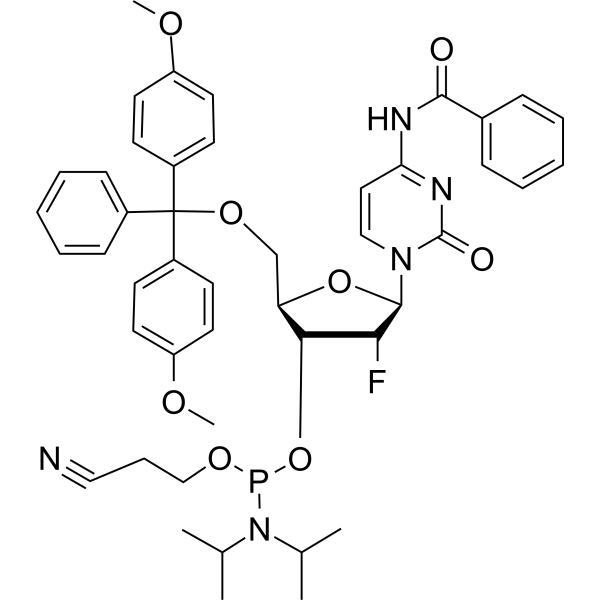
-
- HY-151738
-
|
|
ADC Linker
|
Others
|
|
Fmoc-Aeg(N3)-OH is a click chemistry reagent containing an Azide. Alkylating the Nitrogen of an amide bond results in peptoid structures, which leads to conformational restrains, like N-methylation and allows backbone derivatisation. Altering cytotoxicity, bacterial cell selectivity and receptor pharmacology through formation of peptoid derivatives have been published for Cilengitide, Piscidin 1, and MC3, MC4 and MC5 receptor agonist. This building block enables design of macrocycles through intermolecular crosslinking or backbone stabilization through intermolecular ring-closure. This compound is a potential building block for the construction of (customized) peptide nucleic acids (PNAs) and for peptoid synthesis . Fmoc-Aeg(N3)-OH is a click chemistry reagent, it contains an Azide group and can undergo copper-catalyzed azide-alkyne cycloaddition reaction (CuAAc) with molecules containing Alkyne groups. Strain-promoted alkyne-azide cycloaddition (SPAAC) can also occur with molecules containing DBCO or BCN groups.
|
-
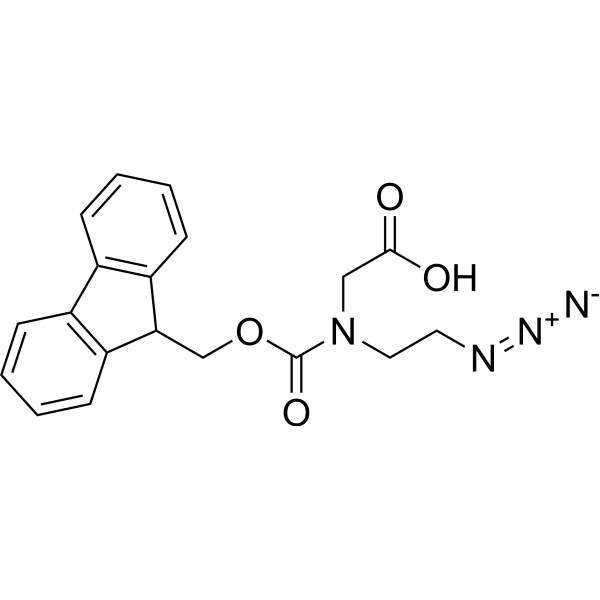
-
- HY-50936S
-
|
Ecteinascidin 743-d3; ET-743-d3
|
Isotope-Labeled Compounds
Reactive Oxygen Species
Apoptosis
|
Inflammation/Immunology
Cancer
|
|
Trabectedin D3 (Ecteinascidin 743 D3) is deuterium labeled Trabectedin. Trabectedin is a tetrahydroisoquinoline alkaloid with potent antitumor activity. Trabectedin binds to the minor groove of DNA, blocks transcription of stress-induced proteins, induces DNA backbone cleavage and cancer cells apoptosis, and increases the generation of ROS in MCF-7 and MDA-MB-453 cells. Trabectedin has tje potential for soft tissue sarcoma and ovarian cancer treatment .
|
-

-
- HY-141582
-
|
N-Stearoyl phytosphingosine
|
Biochemical Assay Reagents
|
Others
|
|
C18 Phytoceramide (t18:0/18:0) (Cer(t18:0/18:0)) is a bioactive sphingolipid found in the stratum corneum of Saccharomyces cerevisiae, wheat grain, and mammalian epidermis. Cer(t18:0/18:0) consists of a phytosphingosine backbone amine linked to a C18 fatty acid chain. Cer(t18:0/18:0) has the function of regulating apoptosis, cell differentiation, proliferation of smooth muscle cells and inhibition of mitochondrial respiratory chain. It also suppresses the expression of allergic cytokines IL-4, TNF-α, and transcription factors c-Jun and NF-κB in histone-stimulated mouse skin tissue. Formulations containing cer(t18:0/18:0) have been used as skin protectants in cosmetics as they reduce water loss and prevent epidermal dehydration and irritation.
|
-

| Cat. No. |
Product Name |
Type |
-
- HY-W013466
-
|
Sebacic acid dimethyl ester
|
Biochemical Assay Reagents
|
|
Dimethyl decanedioate belongs to the class of diesters and consists of a sebacic acid backbone (also known as sebacic acid) esterified with two methyl groups. This compound has a fruity smell and is commonly used as a flavor and fragrance ingredient in a variety of products, including perfumes, soaps and cosmetics. It can also be used as a plasticizer in the production of polymers and as a neutralizer in the synthesis of certain drugs.
|
-
- HY-154921A
-
|
LacCer (porcine RBC)
|
Cell Assay Reagents
|
|
Lactosylceramide (porcine RBC) is an endogenous bioactive sphingolipid .
|
-
- HY-156138A
-
|
|
Chelators
|
|
CB-TE2A (tetrahydrochloride)is a bifunctional chelator (Bifunctional Chelator; BFC), which is a TETA derivative of the macrocyclic ligand tetradecane backbone. CB-TE2A (tetrahydrochloride) can be used for conjugation of peptides and radionuclides.
|
-
- HY-W717742
-
|
|
Chelators
|
|
p-NO2-Bn-Cyclenis a bifunctional chelator (Bifunctional Chelator; BFC), which is a derivative of the macrocyclic ligand dodecane backbone Cyclen. p-NO2-Bn-Cyclen can be used for conjugation of peptides and radionuclides.
|
-
- HY-141582
-
|
N-Stearoyl phytosphingosine
|
Biochemical Assay Reagents
|
|
C18 Phytoceramide (t18:0/18:0) (Cer(t18:0/18:0)) is a bioactive sphingolipid found in the stratum corneum of Saccharomyces cerevisiae, wheat grain, and mammalian epidermis. Cer(t18:0/18:0) consists of a phytosphingosine backbone amine linked to a C18 fatty acid chain. Cer(t18:0/18:0) has the function of regulating apoptosis, cell differentiation, proliferation of smooth muscle cells and inhibition of mitochondrial respiratory chain. It also suppresses the expression of allergic cytokines IL-4, TNF-α, and transcription factors c-Jun and NF-κB in histone-stimulated mouse skin tissue. Formulations containing cer(t18:0/18:0) have been used as skin protectants in cosmetics as they reduce water loss and prevent epidermal dehydration and irritation.
|
| Cat. No. |
Product Name |
Target |
Research Area |
-
- HY-P3159
-
|
|
Biochemical Assay Reagents
|
Others
|
|
VPM peptide is a dithiol protease-cleavable peptide cross-linker. VPM peptide can be incorporated into the backbone of the PEG-diacrylate (PEG-DA) macromer to form PEG hydrogel .
|
-
- HY-P3159A
-
|
|
Biochemical Assay Reagents
|
Others
|
|
VPM peptide TFA is a dithiol protease-cleavable peptide cross-linker. VPM peptide TFA can be incorporated into the backbone of the PEG-diacrylate (PEG-DA) macromer to form PEG hydrogel .
|
| Cat. No. |
Product Name |
Target |
Research Area |
| Cat. No. |
Product Name |
Category |
Target |
Chemical Structure |
| Cat. No. |
Product Name |
Chemical Structure |
-
- HY-W004283S
-
|
|
|
Pentadecanoic acid-d29 is the deuterium labeled Pentadecanoic acid. Pentadecylic acid is a saturated fatty acid with a 15-carbon backbone.
|
-

-
- HY-50936S
-
|
|
|
Trabectedin D3 (Ecteinascidin 743 D3) is deuterium labeled Trabectedin. Trabectedin is a tetrahydroisoquinoline alkaloid with potent antitumor activity. Trabectedin binds to the minor groove of DNA, blocks transcription of stress-induced proteins, induces DNA backbone cleavage and cancer cells apoptosis, and increases the generation of ROS in MCF-7 and MDA-MB-453 cells. Trabectedin has tje potential for soft tissue sarcoma and ovarian cancer treatment .
|
-

-
- HY-W004283S1
-
|
|
|
Pentadecanoic acid-d3 is the deuterium labeled Pentadecanoic acid. Pentadecylic acid is a saturated fatty acid with a 15-carbon backbone.
|
-

-
- HY-W004283S2
-
|
|
|
Pentadecanoic acid-d2 is the deuterium labeled Pentadecanoic acid. Pentadecylic acid is a saturated fatty acid with a 15-carbon backbone.
|
-

-
- HY-W008351S
-
|
|
|
L-Ribose- 13C is the 13C labeled L-Ribose. L-Ribose, a non-naturally occurring pentose, is an ideal starting material for use in synthesizing L-nucleosides analogues. Many anticancer and antiviral agents are synthesized based on a backbone of L-Ribose and i
|
-

| Cat. No. |
Product Name |
|
Classification |
-
- HY-151738
-
|
|
|
Azide
|
|
Fmoc-Aeg(N3)-OH is a click chemistry reagent containing an Azide. Alkylating the Nitrogen of an amide bond results in peptoid structures, which leads to conformational restrains, like N-methylation and allows backbone derivatisation. Altering cytotoxicity, bacterial cell selectivity and receptor pharmacology through formation of peptoid derivatives have been published for Cilengitide, Piscidin 1, and MC3, MC4 and MC5 receptor agonist. This building block enables design of macrocycles through intermolecular crosslinking or backbone stabilization through intermolecular ring-closure. This compound is a potential building block for the construction of (customized) peptide nucleic acids (PNAs) and for peptoid synthesis . Fmoc-Aeg(N3)-OH is a click chemistry reagent, it contains an Azide group and can undergo copper-catalyzed azide-alkyne cycloaddition reaction (CuAAc) with molecules containing Alkyne groups. Strain-promoted alkyne-azide cycloaddition (SPAAC) can also occur with molecules containing DBCO or BCN groups.
|
Your information is safe with us. * Required Fields.
Inquiry Information
- Product Name:
- Cat. No.:
- Quantity:
- MCE Japan Authorized Agent:



































